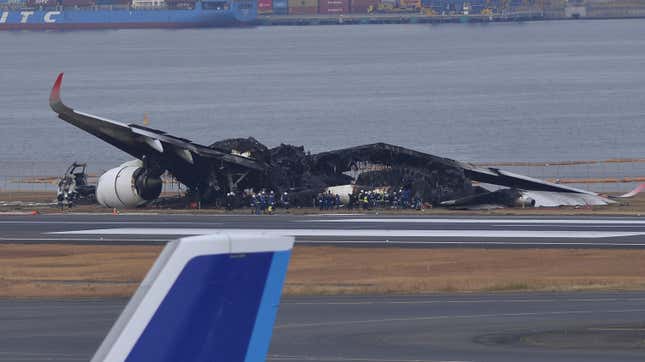
Early findings are emerging on how Japan Airlines Flight 516 collided with a Japanese Coast Guard Dash 8 while landing at Haneda Airport in Tokyo. The Japanese government has confirmed to NHK, the country’s public broadcaster, that the Bombardier Dash 8 was ordered not to enter the runway before the fiery collision.
While all 379 passengers were evacuated from the crashed JAL Airbus A350-900, five of the six people onboard the Coast Guard aircraft were killed. Only 17 JAL passengers had minor injures after the crash. The captain was the sole survivor on the Dash 8 but was left seriously injured.

The transcript of the air traffic control communications was also released by Japan’s transport ministry. The controller told JAL Flight 516 to continue its runway approach at 5:43 p.m. local time yesterday and cleared the aircraft for landing two minutes later. The JAL pilot was informed there was another plane waiting to depart. Ten seconds later, the Coast Guard aircraft was ordered to hold on a taxiway for the same runway, told it had departure priority and received no further instructions. The Dash 8 pilot repeated the instruction back to the controller. The collision happened two minutes later.
Japan Airlines and the Coast Guard have both stated that their aircraft was cleared to use the runway. The ATC transcript isn’t a definitive record of events that took place at Haneda Airport before the crash, but it puts the Coast Guard’s claims under heavy scrutiny. Japan Transport Safety Board is conducting a full investigation, including interviewing both pilots and reviewing flight data.
In the United States, near-misses in similar situations have been on the rise. There were 19 near-misses in 2023, the most since 2016. The Federal Aviation Administration has set out a goal of reducing near-misses to zero. However, air traffic controllers are too few in number and are consistently overworked. Controller burnout and sheer stress have led to drinking and sleeping on the job in towers and control centers.

